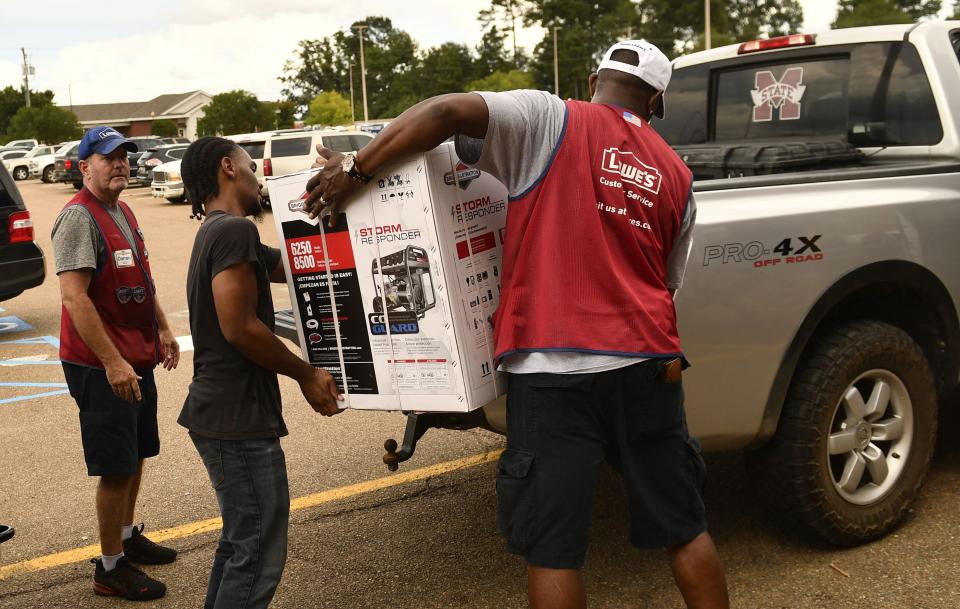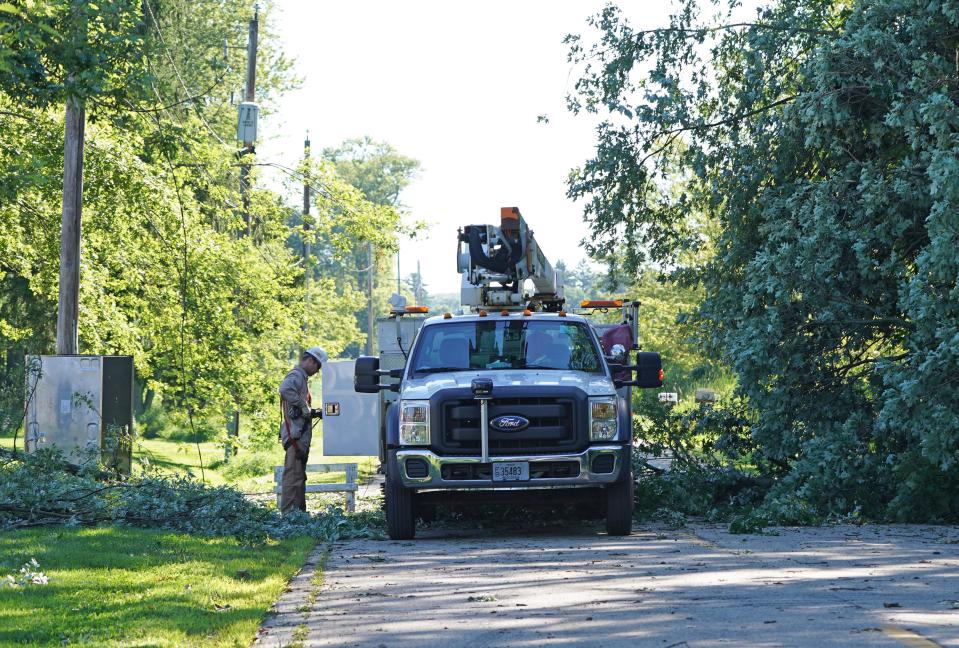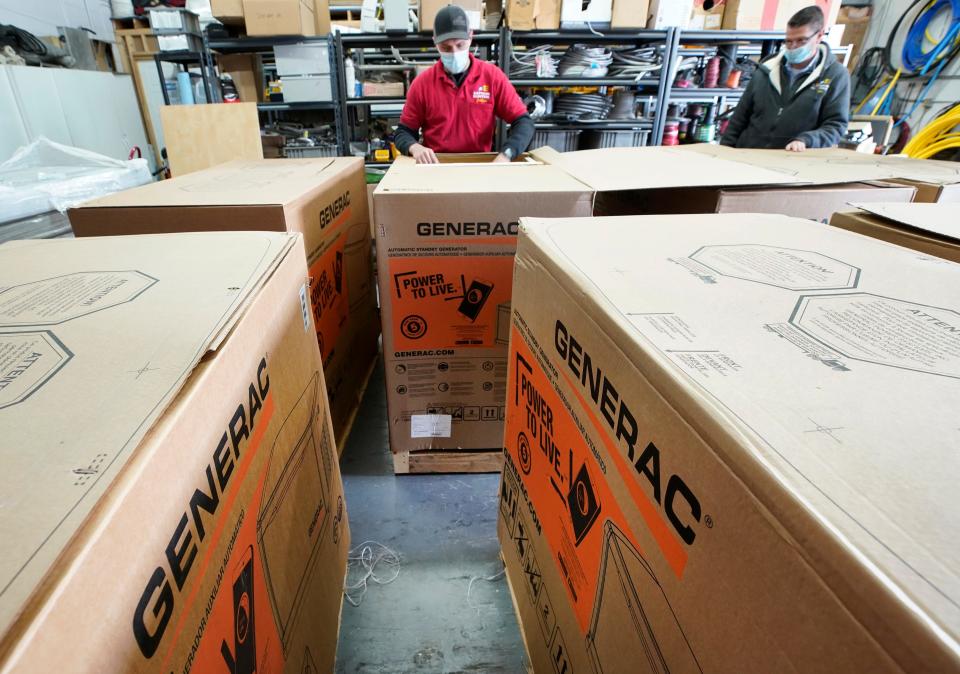Storms, floods, heatwaves: Extreme weather boosts generator sales for Generac, Kohler and Briggs.
Strong storms that recently knocked out power to thousands of We Energies customers in southeastern Wisconsin had many homeowners once again thinking they need to have a backup power system.
Such concerns across the country - a heatwave in the Southwest, warnings of a strained electric grid, torrential rain and flooding in the Northeast - have customers worried about unexpected power outages.

Extreme weather events have become more common in all seasons, and power outages are expected to become more frequent and longer lasting.
It has all added up to a sales boon for generator companies like Wisconsin-based Kohler, Generac and Briggs & Stratton, three of the leaders in the industry.
Melanie Tydrich, marketing manager for home energy generation at Kohler, said demand for generators was already growing before it took off with the start of the coronavirus pandemic in 2020.
"I think the pandemic and all of the different weather events that are coming up really drove home to people the necessity to be self-sufficient within their own homes," she said. "They had a feeling of, wow, I am really out here on my own and when the power grid goes down, not only am I not having lights, but I don't have any connection to my communication devices, I can't do my work from home, my school from home and my heating or my air conditioning is out."
In Wisconsin, one of the prime drivers is basement flooding when spring storms deliver the double whammy of power outages and torrential rain, said Darren Kalal, owner of Integrated Building Systems in Milwaukee, a Generac dealer.
"Places like Arizona, and Texas, they don't have basements so they don't flood," Kalal said. "But in Wisconsin a lot of people's basements do flood and they get tired of it. They've usually gone through one, two or three before they decide, you know, we're just not doing that anymore."
Here's what you need to know if recent weather news or past experience are piquing your interest in buying backup home power.

Key questions to ask yourself when you start thinking about a backup generator
There are a lot of options when it comes to home generators. Choosing the right one comes down to these core questions:
How often do you experience power outages?
What's the typical duration of a power outage?
How well do you cope with a loss of power? What can't you live without?
How much are you willing to spend to have a backup for an event that may not happen for years?
The answers to those questions can take you a long way towards deciding whether it's time to buy a genearator and, if the answer is yes, what size and type it should be. The options range from less than $1,000 to $10,000 or more.

If you just want to keep food cold and the sump pump running, a smaller portable generator could do just fine.
But if you can't stand the thought of candles and flashlights, only having cold water or no airconditioning, you may be a candidate for a whole-house backup system.
"It really just starts with what's that intended use? What are you really looking to do?" said Randy Sandlin, Generac's senior vice president of global product management.
Portable generators offer flexibility but have limits
Portable generators are a popular choice for the budget conscious and for people who can get by with only powering a few key items. With costs starting in the hundreds of dollars, they're by far the least expensive way to ensure you'll have electricity the next time the lights go out.
They also make up the lion's share of the home generator market, accounting for about $4 billion in sales in 2022, according to a May report by Global Market Insights.
Typically powered by gasoline, smaller portable generators are powerful enough to run a few key items. Buy bigger and you can start adding in other items, including a transfer switch that taps directly into your homes electric box to power essential items, eliminating the need for extension cords.
One downside: they run through a lot of gasoline - think about gas lines you might have seen during the last extended outage in your neighborhood.
They also aren't designed for continuous use, particularly over multi-day stretches.
However, there's an added bonus to owning a portable generator - depending on the size, they can come along to festivals, camping, tailgating and other outdoor events, giving them an on-the-go versatility that dedicated home generators don't have.
Home backup generators can keep everything humming for days
Full-home backup systems, by contrast, are hardwired into a home's electrical system and switch on automatically when the power goes out.
The knowledge that the power will come back on in a matter of seconds even if you're not at home is a big selling point, said Kalal said.
Customers for these generators tend to be homeowners who don't expect to move to a new house soon, who want to be sure that everything will work during an outage. and don't want the inconvenience of hauling out a portable generator, firing it up and stringing extension cords into the house from outside.
These generators run on natural gas or propane and vary their output to only produce as much power as you need. They can be sized to power everything in the house, or scaled back to just cover the essentials.
"It's a solution to a problem that's really driven by peace of mind and convenience," Sandlin said.
Getting that peace of mind isn't cheap
Berg estimates the owner of a standard-size Wisconsin home can expect to spend $10,000 to $15,000 to install a whole-home generator in an existing home. That includes the generator, electric and fuel connections, grading, permits and other costs. New home installations can be significantly less.
The number of homeowners, particularly those building new homes, who are installing fixed-in-place standby generators is growing, but they still only account for less than 6% of all homes in the U.S. Twenty years ago, less than 1% of homes, had backup generators, and those were mostly along hurricane-prone coastlines, Sandlin said.
Both Generac and Kohler see that still small number as a significant opportunity and this year introduced their largest generators, units that are capable of fully powering homes of 5,000 square feet or more.
Tydrich said it's important to work with an installer to determine exactly what your backup power needs are. Bigger isn't always better, she said.
"The one thing that we don't recommend is getting a generator that runs everything in your house," she said. "Getting a generator that's larger than what you actually need is actually going to just be not only a waste of the product costs but also your fuel costs."
What about renters and condo owners?
There are backup power options for people who live in multi-story apartment buildings or condominiums, places where generators aren't practical or allowed.
Generac recently introduced what it calls Portable Power Stations, backup batteries that can keep the internet running, charge phones or even power a refrigerator. How long a charge lasts depends on what's plugged into it. During longer term outages it can be recharged with vehicle's electrical system or with optional solar panels, Sandlin said.
"It's clean, it's quiet, you can bring them inside, it's also good for on the go camping, tailgating and other things like that as well," he said.
This article originally appeared on Milwaukee Journal Sentinel: Generac, Kohler and Briggs & Stratton enjoying booming generator sales
